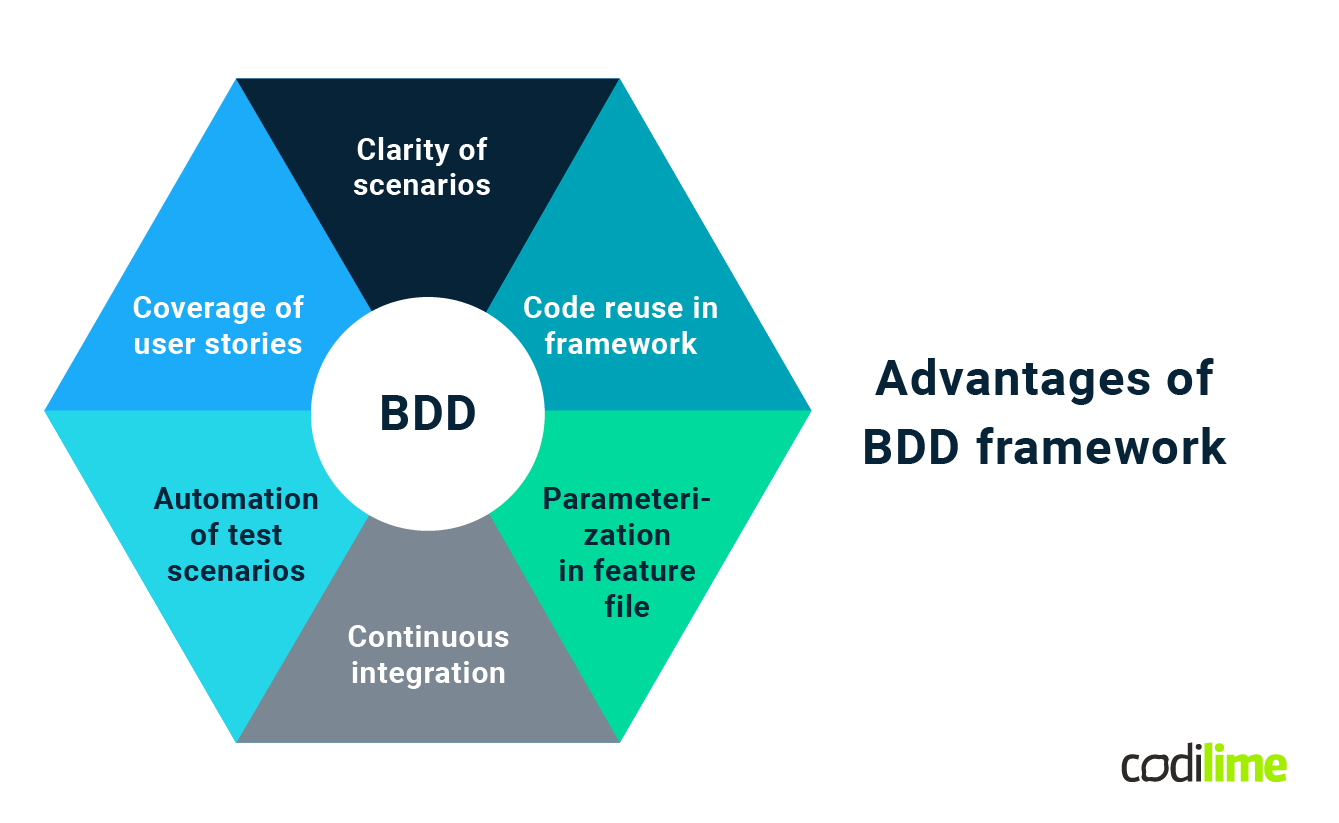In the rapidly evolving landscape of software development methodologies, Behavior-Driven Development (BDD) stands out as a powerful approach that bridges the gap between technical implementation and user expectations. It emerges as a robust methodology that effectively closes the divide between intricate technical implementations and the often elusive realm of user expectations.
This article dives into the foundational principles of BDD. It describes the mechanics of BDD and its transformative potential in enhancing the overarching quality of software products. Next, it uncovers how BDD's unique philosophy fosters collaboration, refines communication, and leads to software that meets user needs and desires.
What is Behavior-Driven Development
BDD is a software development methodology that focuses on collaboration between different stakeholders (such as developers, testers, product owners or clients) to ensure that software is developed based on the desired behavior and requirements.
With the use of natural language and structured scenarios to describe the expected behavior of the software from the end user's perspective, it is possible to create one source of truth for example, product owners to use it as documentation, developers have clear business logic to implement in code and a quality assurance team to create automated tests.
Using a specialized syntax called Gherkin, containing key words like Give, When, Then,
specific scenarios can be outlined:
Scenario: Adding items to the cart
Given the customer has selected products
When they add items to the cart
Then the cart should display the added items
More advanced usages of Gherkin will be showcased later on.
Where should BDD be used?
BDD as any other methodology should be used accordingly to the project’s specifications and team structure:
-
Projects that prioritize a customer-centric approach.
By writing scenarios from the user's perspective and focusing on end-to-end functionality, BDD ensures that the delivered software directly addresses user needs and provides value. Writing feature descriptions as scenarios from a customer perspective in Gherkin syntax, helps to create software crafted for users' expectations.
-
When working with cross-functional teams comprising developers, testers, product owners, ect.
The natural language syntax of BDD scenarios, enables effective communication between team members no matter their background. By collaboratively defining scenarios cross-functional teams can align their efforts, ensure a shared understanding of requirements, and deliver software that meets user expectations.
-
BDD also aligns well with Agile development methodologies by promoting iterative and incremental development, where created scenarios can grow in the same manner.
It enables teams to continuously validate that their software meets the desired behavior and can adapt to changing requirements.

Advantages of using BDD
Working together continuously on the projects documentation, main benefits coming from Behavior-Driven Development can me highlighted:
- Encourages collaboration, providing a shared understanding of software behavior across the team. By expressing requirements in a natural language format, misunderstandings are minimized, leading to accurate implementations, which helps identifying potential issues and difficulties, reducing possible bugs in the future at an early stage of the software life cycle.
- BDD's scenarios are written from the user's perspective, keeping the development team aligned with customer needs and expectations. This user-centric approach ensures that the software delivers genuine value.
- Promotes the creation of automated tests based on scenarios. BDD testing serves as living documentation, helping detect defects, providing rapid feedback during development, as well as test coverage of the application.

BDD best practices
Working in Behavior-Driven Development methodology in real life applications can get tricky, following a few guidelines will save the team time and problems:
-
Make the created scenarios drive the project, not reflect the current state. First developers should help create the BDD documentation, then build basing on it.
-
BDD is a methodology for the whole project, often with lack of involvement from other parties, only testers are using gherkin scenarios for their daily tasks (testing scenarios, test automation), raising a big question why even use BDD.
-
Involve all relevant stakeholders (if possible), including developers, testers, domain experts, product owners and business analysts, in the BDD process to ensure a shared understanding of requirements - as well as necessary education on BDD.
-
Add recurring meetings in the calendar for everyone involved in the process to constantly improve and add new scenarios to the project’s documentation.
-
While creating scenarios, focus on the user's perspective and do not go into tiny details using Gherkin syntax.
OK: Given the user is logged in into the application NOK: Given the user inputs his login And the user inputs his password And the user clicks on login button -
Focus on the user's behaviors and expectations rather than just technical implementation details. Define features in terms of the value they provide to users.
Where things could go wrong with BDD
Deciding to use Behavior-Driven Development, the team should keep in mind it is a process and dedicated work towards the end goal should be provided by all parties. Few things to out for:
- Learning curve after introducing new Gherkin syntax to everyone. Teams must invest time in learning and adapting to these changes at the beginning, which may initially slow down the development process.
- Scenario maintenance of evolving requirements, scenarios may need updates. Balancing scenario coverage and maintenance can be challenging as the project progresses.
- Often seen only QA teams using BDD for running automated tests, as it was a testing framework not methodology, where whole teams should contribute and develop live documentation.

Advanced examples with BDD
1. Scenario: Adding Products to Cart
Given the customer is browsing the online store
And the store has products "Product A" and "Product B"
When the customer adds "Product A" to their cart
And the customer adds "Product B" to their cart
Then the cart should display both "Product A" and "Product B"
And the cart's total should reflect the sum of the selected products
It is possible to extend our Given/When/Then clause with the “And” keyword to extend some requirements and still keep the scenario readable.
2. Background:
Given a user1 is logged in into the application.
Scenario: Go to mailbox
When the user click on envelope icon
Then the user should be redirected to the mailbox
Scenario: Go to dashboard
When the user click on dashboard icon
Then the user should be redirected to the dashboard
Background keyword is executed before each scenario, saving us time and space for repeating the same actions every time, like logging in.
3. Scenario Outline: Searching for Products
Given the customer is on the search page
When the customer enters "<search_query>" in the search bar
And clicks the search button
Then the customer should see “<product>” on the list
Examples:
| search_query | product |
| "laptop" | “13’ laptop” |
| "phone" | “6’ phone” |
| "headphones" | “wireless headphones” |
Scenario Outline with examples also can save us time by not repeating the same scenario a couple of times just to provide different parameters.
Conclusion
Behavior-Driven Development is a methodology that first and the most important encourages mutual cooperation to meet client’s needs. Using human-readable scenarios written in Gherkin syntax, BDD aligns development with user expectations, provides a shared understanding on how the application should work, and promotes automated testing.
By focusing on business value, continuous integration, and iterative development, BDD helps deliver user-centric software with improved quality and efficiency.
BDD is commonly mistaken for a testing tool due to great cohesion of Gherkin and Cucumber layers, but in this article it was omitted on purpose, as technical implementation for end to end tests should be a different topic.








